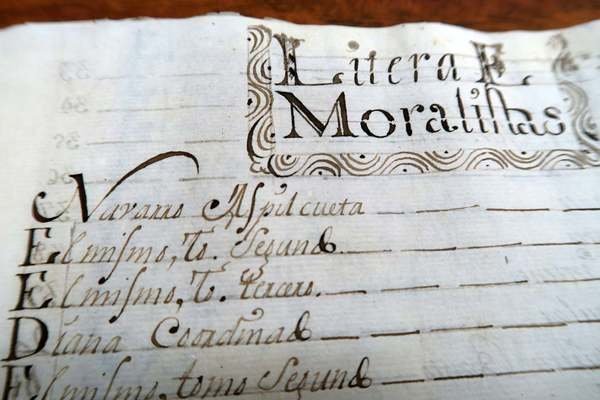
Franziskanische Missionare und kirchliche Normativität in nördlichen Grenzregionen Neuspaniens, 1580-1630
As part of the SFB project Kowledge of the pragmatici, my research project explores ecclesiastical expansion and consolidation on New Spain’s northern frontiers amidst a situation of crisis in the late 16th century. Firstly, the bloody conflict with the Chichimeca Indians almost reversed the Spanish colonial project in Mexico. Secondly, royal orders and diocesan authorities challenged mendicant exceptional powers in Mexico – major points of friction were the administration of Indian doctrinas, the collection of tithes, the administration of sacraments, and independence from the bishoprics. Thirdly, internal conflicts within the Franciscans brought instability to the convents and put on jeopardy the missionary agenda. For example between 1584 and 1589, the Commissary General General of New Spain Fray Alonso Ponce’s intense clash with local Franciscan authorities and the viceroy hampered Franciscan options to influence the Third Provincial Council of Mexico (1585). I argue that despite these crises, the Franciscan pastoral program thrived after the 1580s because Franciscans already had an advantage that made other options unfeasible. They accumulated more missionary experience than any other clerical group. Their numerical presence in New Spain was unmatched --- human resources and geographic expansion. Therefore, despite efforts to limit Franciscan control over Indian doctrinas, they remained key players in the conversion process and the consolidation of Catholicism for the rest of the colonial period.
I am interested in tracing the application of codes of conduct and modes of behavioural control that stemmed from ecclesiastical authorities in a context of confrontation. Scholars have long exposed the shear viscosities in the relationship between the diocesan and regular clergies (i.e. Franciscans, Jesuits, Dominicans) over the administration of sacraments to native peoples in colonial Spanish America. I concentrate on the role Franciscans (the largest religious order in colonial Mexico) played in the creation of a new imperial order in a frontier region with little Spanish presence. A starting point is the Franciscan application of the Third Provincial Council of Mexico (1585) in the midst of internal strife. The Council was in charge of applying the Decrees approved by the Council of Trent (1545-1563), or in other words, of applying the Catholic reformation in Mexico. By the time of the Council, a political battle between the Commissary General Fray Alonso Ponce, the highest Franciscan officer in New Spain, and Franciscan local authorities was taking place. Excommunications abounded in this crisis and the Commissary General was eventually exiled by the Viceroy, who sided with the local Franciscans. His expulsion certainly diminished Franciscan bargaining power during the Council, which at the same time challenged Franciscans’ exceptional powers in Mexico. I study the Franciscan pastoral opus produced after the Council – confession manuals, catechisms, and moral treatises - which arguably contributed to the creation of a legal order in the frontier setting of 16th-century Michoacán.
The Michoacán frontier becomes a place to test the project questions: how did the normative discourse and religious authority took form in a multi-ethnic and multi-religious frontier in the aftermath of the Spanish conquest? Did the difficulties in Michocán deterred Franciscan missionaries to enforce moral codes of behavior? A study of such Franciscan province provides insights into how missionaries attempted to institute practices to ‘normalize’ frontier societies. Thus, I investigate how Franciscan missionaries carried ecclesiastical norms, mostly moral and doctrinal codes, over frontier communities. Overall, I want to analyze the various layers of execution within competing actors to explore the complex process of instilling normativities in a colonial setting.
Bild: Buchinventar eines mexikanischen Franziskanerkonvents
(INAH, Ciudad de México; Foto: Otto Danwerth)











